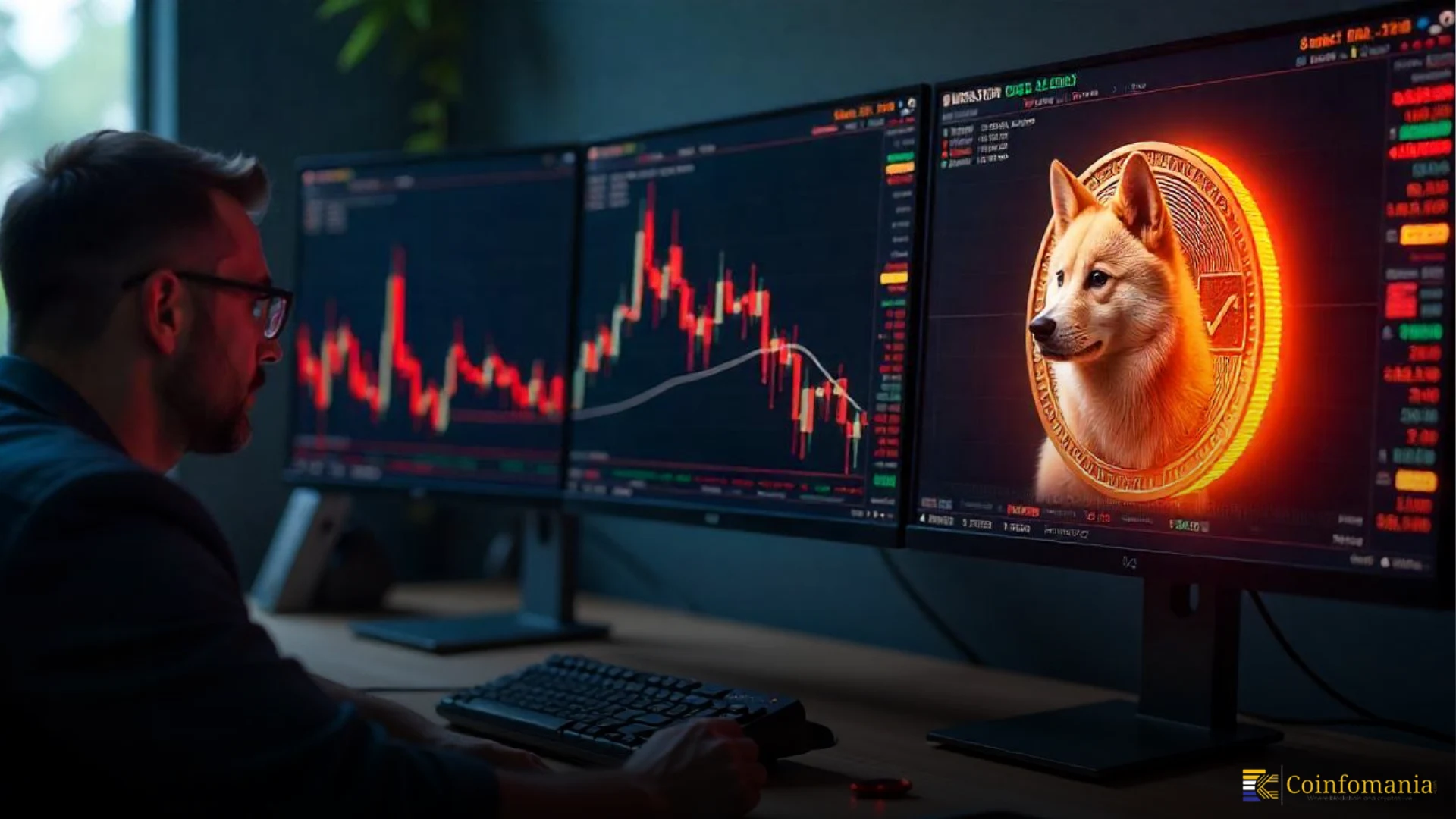Is DOGE Losing Its Bite? Key Metrics Signal Trouble Ahead for Dogecoin
0
0

Dogecoin, once the darling of meme-coin enthusiasts and market thrill-seekers, appears to be slipping into dangerous territory. A sharp drop in active addresses, fading social media interest, and bearish technical signals are casting doubt on DOGE’s short-term future.
While many altcoins are navigating the current market volatility with resilience, Dogecoin has dropped over 20% from its recent peak, leaving traders and long-term holders asking the same question: Is DOGE slowly losing its grip on investor attention?
A Silent Crowd: Where Did the Hype Go?
One of Dogecoin’s biggest strengths has always been its passionate online community. From Reddit threads to viral tweets, DOGE has historically thrived on its memetic power. But according to recent data, those once-active voices are growing quiet.
After reaching a high in daily active addresses last November, DOGE’s on-chain activity has slumped back to levels last seen in early January. This decline signals not just a drop in transactions, but also a possible waning of investor enthusiasm.
More concerning is the fall in Dogecoin’s social dominance—a metric that tracks how often a coin is mentioned across social media relative to the broader market. As attention shifts elsewhere, DOGE is finding it harder to stay in the spotlight, a dangerous trend in a sentiment-driven asset class.
Negative Funding Rates Add Fuel to the Fire
As if the lack of chatter wasn’t enough, DOGE’s funding rates have also turned negative, according to data from Coinglass. This means short positions are being incentivized—a classic bearish signal.
Historically, such negative funding periods sometimes precede short-term rebounds. But right now, the prevailing sentiment in the market is caution, not confidence. With $37.15 million in DOGE long liquidations during the latest downturn, it’s clear that many traders have been caught off guard trying to bet on a recovery too early.
Technical Breakdown: What the Charts Reveal
The Dogecoin charts aren’t offering much comfort either. The On-Balance Volume (OBV) continues to drop, showing declining buying interest over time. Meanwhile, the Relative Strength Index (RSI) has remained stuck below the neutral 50 mark since January—another sign that DOGE is struggling to regain upward momentum.
Analysts are closely watching two key support levels: $0.131 and $0.102. These levels, last established during Dogecoin’s October 2024 consolidation phase, may determine whether DOGE can stage a rebound or continue its downward slide.
If DOGE can bounce convincingly off $0.131, a short-term rally toward $0.154 or even $0.164 isn’t out of the question. But given the current landscape, any bounce should be treated with caution. The bigger picture still points toward a slow grind downward unless a significant catalyst appears.
Can DOGE Recover, or Is the Bark Louder Than the Bite?
Dogecoin is at a crossroads. What was once a symbol of retail power and meme magic is now facing mounting technical and fundamental pressure. With fewer users actively participating and fewer traders betting on a bounce, DOGE must prove it still has teeth.
The next few days will be crucial. If key support levels fail, we may see a deeper retracement. But if DOGE surprises the market and regains momentum, it could ignite another wave of speculation.
For now, the trend is bearish, and the community is watching closely.
The question isn’t just will DOGE recover?—it’s will anyone still care when it does.
The post Is DOGE Losing Its Bite? Key Metrics Signal Trouble Ahead for Dogecoin appeared first on Coinfomania.
0
0
 Manage all your crypto, NFT and DeFi from one place
Manage all your crypto, NFT and DeFi from one placeSecurely connect the portfolio you’re using to start.





